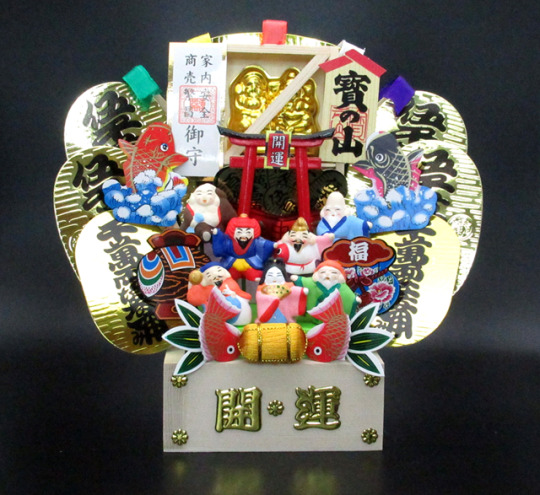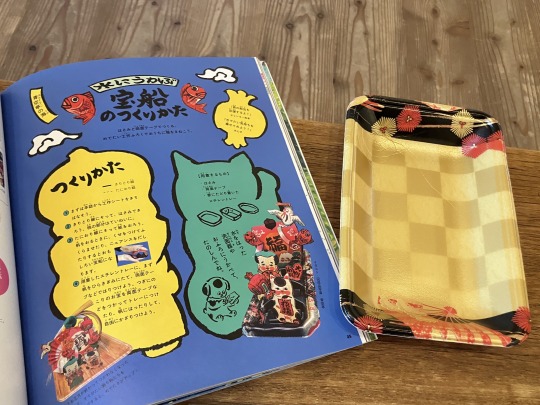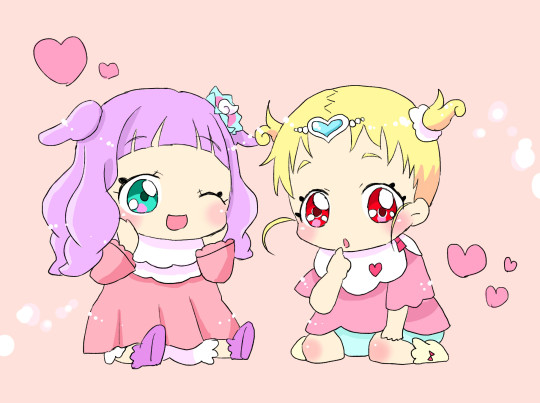#枡
Explore tagged Tumblr posts
Text
国字(枡)

国字(枡)
[漢字] 枡 [読み] ます [意味] 伝統的な日本の計量器具で、主に体積を測るために使用されます。特に、米や酒などを量るために使われてきました。枡は木で作られることが多く、正方形の箱の形をしています。
0 notes
Text
マス

枡(ます)は、主に日本で伝統的に使用されてきた容器の一つです。一般的には、木で作られ、四角い形状をしています。枡は、特に酒や米などの精密な計量が必要な物を測るために使用されます。日本の伝統的な行事や祭り、お茶の儀式、料理の際に、特定の数量や分量を示すために枡が用いられることがあります。
また、枡は日本の文化や伝統において重要な役割を果たしており、特別な機会や祝い事で贈り物として使われることもあります。枡はしばしば木工芸品として美しく装飾され、特に様々な行事や儀式での使用において、日本の伝統的な価値観や儀礼を象徴するものとなっています。
手抜きイラスト集
0 notes
Text

✍人生をシンプルにする禅の言葉/ 枡野俊明
ずっと宗教なんて胡散臭いと思って生きてきたけど、去年職場の先輩に禅宗に関する本を借りて読んで以来すっかりハマった。先人の教えには納得させられるところが沢山あって良い意味で今も昔も人間同じことを感じるし通ずるものがあるし大切にすべきことも物も同じだなと思う。生きる上で基本的なことを言っているようではあるけれどつい忘れてしまっている、人生の所々を疎かにしていることを痛感。忘れないように定期的に読みたい。現在という点に全集中!!
2 notes
·
View notes
Text



酉の市の熊手のような、賑やかな枡飾り。お祝いの気持ちが溢れ出し、枡からはみ出るが如し。気は心。毎日目にするうちに、運気も上がる華やかさ、です。
お誕生日、記念日、お祝いのお品に迷うような時こそ、枡飾りをおすすめ。この華やかさで、場が明るくなること請け合いです。
「開業祝い」「新築祝い」「還暦祝い(長寿」「合格祝い」「昇進祝い」など、『およそおめでたい場面での贈り物』に胡蝶蘭や花束の代わりにお贈りください。益々のご発展をお祈り申し上げます!の気持ちが伝わることでしょう。
高齢者への贈り物にもおすすめです。何でも持っている世代には、目を楽しませてくれる明るさは、心に響くはずです。
七福神の他に、招き猫が生えてる枡飾りもございます。こちらの方がサイズ控えめなので、場所を選ばずどこにでも飾れるかなと思います。
通販→https://wazakka-kan.jp/masu/
#縁起物 #花束の代わりに #開店祝い #周年祝い #新築祝い #昇進祝い #進学祝い #誕生日 #長寿祝い #還暦祝い #枡飾り #景気がいい #商売繁盛 #家内安全 #大吉 #招き猫 #インテリア雑貨 #和雑貨
0 notes
Text



4月18日(金)open 12-19
一日も、一週間もあっという間に過ぎてびっくりしています... すっかり夕方ですが、今日は金曜日。 19時まで皆さまをお待ちしております。
今日は左右社さんから本が届きました!
『おめでたい人』寺井奈緒美 『花のうた』は同時代の歌人100人がうたった 100首の〈花〉の短歌アンソロジー。 『毎日のように手紙は来るけれどあなた以外の人からである』枡野浩一全短歌集
寺井さんの『おめでたい人』の装画は犬ん子さん。 おめでたさが溢れています。 早く読みたい気持ちをおさえつつ、ちらちらと拾い読みをしては、くすくすしています。 『さがるまーた2』にも青空亭(犬ん子/チャンキー松本)のおめでたい絵が登場します。 水にうかぶ宝船が作れるという、このとじこみ付録。 ずっと気に入った船(食品トレー)が手に入らずにやきもきしていたのですが、とうとうこれだ!というめでたい船が手に入ったので、切って貼って工作したいと思います! お買い上げの皆さまも、お家に帰ってから読むだけではなく、楽しく体感してもらえると嬉しいなぁ。
#左右社#おめでたい人#寺井奈緒美#犬ん子#花のうた#短歌アンソロジー#毎日のように手紙は来るけれどあなた以外の人からである#枡野浩一#さがるまーた2#絵本を体感する雑誌さがるまーた#春のさがるまーた2展#講談社#絵本#本屋#届いた本#松本市#本中川
0 notes
Text
ちなみにヒロインであるライターは、自分には書きたいことがないのだと自覚します。松尾スズキの書くエッセイにも戯曲にも、同じ意味の告白が登場しますが、しかし、そこを見つめている人は、書くことがある人です。俺様は書くべきことがある特別な人間だ、なんていうふうに、自分を騙せない人なのです。
『クワイエットルームにようこそ』 解説(枡野浩一) pp. 141
0 notes
Text

今日のお昼は枡はんの濃口半チャンラーメン。
やめられない味だ。郡山で暮らし始めた頃からハマって、すでにウン十年。やめられない。
2025年20杯目。
#ラーメン
#郡山ブラック
72 notes
·
View notes
Text
祭と神事②
Continued from this previous post

神輿(御輿)
Read as Shinyo, it is a palanquin for carrying the kami. The ones decorated with phoenixes are called 鳳輦 Hōren, or imperial carriages.
The labels in order from top to bottom, left to right:
大鳥(鳳凰)Ōtori (Hō’ō): pheonix decoration on the top
駒札 Komafuda: wooden signboard with a peaked top (usually with information about a historical place)
露盤 Roban: base of a pagoda finial
屋根紋 Yanemon: the family/shrine crest that sits on the roof of the palanquin
吹返し Fukikaeshi: decoration that surrounds the edges of the roof
蕨手 Warabite: decoration based off the curved pommel of a type of iron sword common during the Nara period
鈴 Suzu: bells
飾紐 Kazarihimo: decorative chords
枡組 Masugumi: square framing (common in houses, temples, and screens)
井垣 Igaki: fencing (commonly seen around wells, hence the name)
擬宝珠 Giboshi: ornamental railing top/knob
担ぎ棒 Katsugibō: Poles for carrying the mikoshi
鳥居 Torii
台輪金物 Daiwa kanamono: the metal fittings on the main support beam on the bottom of the palanquin

山車(屋台・だんじり)
The name of this varies from region to region. It is a float with wheels that can be pushed or pulled around.
The labels in order from top to bottom, left to right:
上勾欄 Kamikōran: upper railing
中勾欄 Nakakōran: middle railing
上段四方幕 Jōdanshihōmaku: the upper decorative curtains that face the four directions
唐破風 Karahafu: type of cusped gable
下段後幕 Gedankōmaku: lower rear decorative curtains
囃子台 Hayashikodai: stage for traditional performances/orchestra/band
台座 Daiza: pedestal
轅 Nagae: forward shaft
車輪 Sharin: cart wheels
下勾欄 Shimokōran: lower railing
神輿と山車の違いは?
In Japan, there are kami that move with the seasons, among other things. For example: Ta-no-Kami 田の神 descends from the mountains to the rice fields in the spring, and returns to the mountains in the fall. The kami enshrined at shrines too will travel to the local parishioners area, as well as other regions, during festivals. During these times, the vehicle in which the kami travel, is the mikoshi.
The original portable shrines have their origins in the palanquins used by emperors and aristocrats. The palanquin with the decorative phoenix on the roof, was originally the vehicle for the emperor.
Since the mikoshi carries the kami (their goshintai 御神体, or bunrei分霊), the main body of the mikoshi is created to look like the main building of a shrine. (See above images)
While the mikoshi is hefted up on one’s shoulders and transported, the danjiri float has wheels and is pulled via rope or other means. They have their origins in the Shirushiyama 標山 floats used during the Daijōsai 大嘗祭, one of the enthronement ceremonies for the emperor. Of course they were also used to transport the kami, but they later became portable stage floats that carried musicians and performers, while shows were put on from them.
近代化で減った山車
The most famous festival with floats is probably the Gion Matsuri held at Yasaka Shrine in Kyoto. These floats are called Yamaboko 山鉾, and are believed to have originated from the 66 halberds offered during a ceremony to appease the spirits of the dead in Gion. As the Gion Matsuri spread to various parts of Japan, it brought with it its floats, soon gorgeous floats in the style of Gion's Yamaboko began to be built.
Up until the early modern era, the Sannō Matsuri (Hie Jinja), and Kanda Matsuri (Kanda Myōjin), also called the Tenka Matsuri 天下祭, featured gorgeous floats. However, with modernization, electric lines began being strung throughout the city, making it difficult to march the floats through the city, and so the portable mikoshi of today took hold.

The cat says: "Kamisama loves to move around."
特殊神事・奇祭
As was mentioned previously, festivals that are held at specific shrines are called 特殊神事 Tokushushinji. Some of these include astounding unusual customs, events, and performances and are called Kisai 奇祭. However it should be noted that they have proper significance and are not just bizarre and eccentric. Of the Kisai, some use fire, some handle gigantic objects, others have comical performances, or many naked men competing against each other.
全国の有名な祭
Explanation below is of the text in the yellow boxes next to each picture. The orange flower shapes read from top to bottom: Gion Matsuri, Kanda Matsuri, and Otaueshiki.

Gion Matsuri (Yasaka Jinja, Kyoto, Kyoto) Purifies the capital from sickness every July. Was started in 869, as a festival to appeased angry spirits.
Onbashirasai (Suwa Taisha, Suwa City/Chino City, Suwa County, Nagano) A festival in which 4 giant pillars are erected at each of the four shrines of the complex. Held in the years of the Tiger and Monkey.
Tenjinsai 天神祭 (Osaka Tenmangū, Osaka, Osaka) One of the 3 Great Festivals of Japan 日本三大祭. Held on July 24th and 25th. The mikoshi is carried on land and across the water by boat.
Kandasai 神田祭 (Kanda Myōjin, Chiyoda, Tokyo) Is considered a national festival alongside the Sannō Festival, it is held alternatively every other year. Approximately 200 mikoshi are carried out.
Sannōsai 山王祭 (Hie Jinja, Chiyoda, Tokyo) Sannō refers to Hiyoshi Taisha, and its branch shrines. It is called the Tenkasai 天下祭 because the shogun watched the transferring of the goshintai into the mikoshi (called 神幸行列 shinkōgyōretsu).
Aoi Matsuri 葵祭 (Kamigamo/Shimogamo Jinja, Kyoto, Kyoto) The correct name is Kamo Matsuri 賀茂祭, and takes place on May 15th. It is one of the three major imperial festivals where an envoy is sent by the Emperor.
Iwashimizusai 石清水祭 (Iwashimizu Hachimangū, Hachiman City, Kyoto) Held September 15th. Another one of the three major imperial festivals. It's a festival where live birds and fish are released to pray for the peace of all living things.
Otaueshiki 御田植式 (Ise Jingū Izawa no Miya, Shima City, Mie) Held June 24th. An elegant ritual registered as an important intangible folk cultural property under the name "Isobe no Omita 磯部の御神田."
Kasugasai 春日祭 (Kasuga Taisha, Nara, Nara) Held March 13th. The last of the three imperial festivals, the peace and prosperity of the nation is prayed for. Said to have been continued from the 9th Century.
Nagasaki Kunchi 長崎くんち (Suwa Jinja, Nagasaki, Nagasaki) Held from October 7th to 9th. It is Suwa Jinja's Fall Grand Festival but is is also known for various exotic devotional dances.
12 notes
·
View notes
Quote
亀田興毅がタイトルマッチ前哨戦として両国国技館でフィリピン人と対戦した時、枡席の隣客が大声で「かめだぁ!弱っちい外人とばっかやるなよ!」と何度もヤジっていたら黒服の強面複数人がさぁ〜っとやってきて、その客をさらって行きました。TBSで生中継していたにしてもボクシングとは”そういうものか!”と妙に感心したことを今回の島田紳助がリングに登場した時に思い出しました。 モンスター出現以来沸いてきたボクシング人気に水をさす愚挙です。どちらにとってもプラスになるようには思えませんが。
島田紳助氏がリング上にサプライズ登場 場内騒然 亀田興毅氏の涙にもらい泣き「亀田家最終章。最後まで感動させてください」と和毅にエール(デイリースポーツ)のコメント一覧 - Yahoo!ニュース
3 notes
·
View notes
Text
失せた油(四)
我ら長野県北佐久郡岩村田の者は、昔はよく小諸まで油を買いに行った。 岩村田でも小諸でも値段はそれほど変わらない。 しかし、枡から容器に油をとろーりと垂らす小気味よさが、小諸の油売りは芸術的なのだ。 だから我らはわざわざ小諸まで行ったのである。
こんなことがあったという。 ある人が、買った油を入れた漆塗りの油でんこ――つまり油を入れる容器である――を身に帯びて、小諸から家に向かって歩いていた。 南大井村の和田つ原まで来ると、道には美しい人たちが大勢いた。 面白そうに話をしているので、彼は興味を惹かれ、近寄っていった。 別に仲間入りはしなかった。美しい人たちの話を傍らで聞いているだけで楽しかった。 そのうち、その人たちが芝居を始めた。 とても面白い芝居で、彼はすっかり魅了されてしまったという。 やがて芝居は終わり、美しい人たちは帰っていった。 さて俺も帰るか、と彼が一歩踏み出すと、地面に漆塗りの油でんこが転がっているのが目に入った。 自分が身につけていたはずの油でんこである。 拾ってみると、紛うことなく我が物だった。 やけに軽いの��中を調べてみたら、すっかり空っぽだったという。
話を聞いた皆は、彼は狐に化かされたのだ、と言い交わした。
(信濃教育会北佐久部会・編『北佐久郡口碑伝説集』十一、奇聞巷談 「19、狐に憑かれた話」)
4 notes
·
View notes
Text
ほろ苦い「通り桟橋」デビュー

2025年2月 茨木新池(茨木市) iPhone11
どうも、こんにちは。2月16日(日)は、茨木新池に行ってきました。今日は例会が3つ入って2号桟橋〜4号桟橋は貸切で、釣りができるのは1号桟橋、5号桟橋、6号桟橋、通り桟橋の4ヶ所です。なので、今まで一度も入ったことがない通り桟橋に入ってみました。

2025年2月 茨木新池(茨木市) iPhone11
ポイントはよくわからないので、他人様のブログを参考に曝気水車の横に入ってみました。通り桟橋は短竿のイメージがありましたが、10尺ぐらい振れそうなのでとりあえず10尺を出してみることにします。浮子は「伊吹」のウドン浮子の9番です。

2025年2月 茨木新池(茨木市) iPhone11
竹竿は、「五郎」の総高野竹の「紅葉握り」を使います。

2025年2月 茨木新池(茨木市) iPhone11
さてと、朝ごはんを用意して…

2025年2月 茨木新池(茨木市) iPhone11
打ち方始め!
シズ合わせをしていたらいつもより遅くな��た。

2025年2月 茨木新池(茨木市) iPhone11
事務所の後ろに建っている建物(左側)の2階がカフェ「NINE STAR」です。11時になったらお昼ごはんを食べに行きます。
ところで、サワリは多いのに大苦戦。さわるのに喰わない。
なんでや?

2025年2月 茨木新池(茨木市) iPhone11
浮子はモゾモゾしたりフワフワしたりするがカチッとした魚信が入らない。やっとカチッと入った〜。

2025年2月 茨木新池(茨木市) iPhone11
やっと釣れた…後から来た人が先に釣ってるのに。
(ノ_-;)ハア…

2025年2月 茨木新池(茨木市) iPhone11
とりあえず缶コーヒーを飲んで一服します。

2025年2月 茨木新池(茨木市) iPhone11
10尺はそこそこサワリに来るが喰わない。「床立て」してた時に鉤にゴミが釣れたり、根掛かりしそうな感覚があったり、床が悪いんかなあ?始めての場所なので疑心暗鬼。左側に超シブイ常連さんが座ったんだが、孫の手ぐらいの長さの竿受けに6尺あるかないかの竹竿。尺数=水深みたいな感じで穂先の真下に浮子があるので傍目にはチョーチン釣りみたい。茨木新池専用というより通り桟橋専用みたいな。ミニチュアの釣具みたいでカッコよすぎ。この人がコンスタントに釣ってるので短竿が良いんかと。8尺に替えて��ます。「若駒」の「最上作」。

2025年2月 茨木新池(茨木市) iPhone11
釣れんね〜。11時を過ぎたので「NINE STAR」に行きました。今日は唐揚げ定食。

2025年2月 茨木新池(茨木市) iPhone11
5号桟橋の入り口から東側を見る。例会が3つで大盛況。

2025年2月 茨木新池(茨木市) iPhone11
10時半ぐらいに隣の枡に��底釣りの人が入ってきたタイミングで尺数変更の所為かもしれないが8尺でほぼサワリもない。段底釣りの人は8尺を使ってるらしいので、11尺に替えて浮子を離してみる。「朴石」の11尺です。

2025年2月 茨木新池(茨木市) iPhone11
11尺に替えて間もないが、12尺が振れそう…そう思うと替えずにいられないw。通り桟橋は初めてだし偵察の意味合いもある。で、この写真を撮ったあと、「寿るすみ」の12.6尺を出して「床立て」を始めたんだが、確かに距離的には12尺が振れるし、なんなら13尺でも使えるかもしれない。だが、しかし…床がガタガタ(汗)。「振り切り」の位置からゴムオモリを浮子の真下に来るように置き直すといきなりトップが水没する…。水中に段差がある?「床立て」は至難の業だが、出来れば何か良いことがありそうな気がしてwしつこくやってたら根掛かり。外れへんかなと引っ張ったら高切れ。5500円もした「夢(伊吹)」の浮子がフロートを付けたまま漂っている(汗)僕は、いつも、仕舞寸法30cmぐらいの振り出しスピニングロッドとスピニングリールとオモリを付けたボラ掛け鉤を持ち歩いているので、事務所の裏に回って対岸から回収に成功。こぶし大の石がゴロゴロしてるので、石の間にゴムオモリが挟まったんかな?

2025年2月 茨木新池(茨木市) iPhone11
反応が良かったのは朝の10尺。10尺に戻します。

2025年2月 茨木新池(茨木市) iPhone11
たまに浮子がモゾモゾするが、喰い魚信がない。並びで釣れてないのは僕だけ。段底の2人はそれぞれ20枚ぐらい釣ってるし、両端の人もそれぞれ釣っててテント際の人は10枚釣ったと知り合いに話してたり、ヒラノさんまでサクッと1枚釣ってはった。なんでやろ〜?左隣の短竿の達人?が10枚以上釣って?15時前に片付けて立ち去ったので、右隣で段底をやられているのが気になってしかたないので、左側に移動した。釣れろw。

2025年2月 茨木新池(茨木市) iPhone11
釣れないのは腕のせいだと思い知らされましたw。なぜ僕だけこんなに釣れないのか?なぜだ〜?ボウズじゃないのに沈んだ気持ちで浮子を眺めていると、ヒラノさんが「(16時の)5分前になったら(曝気)水車を回すから水飛沫を被らんように気をつけてな」と言ってくれたのでもう諦めた。両目は開かなかったけどボウズじゃなくて良かったわ。
ところで、営業終了前に曝気水車が回るから「ヒラノさん、早いよ〜」って言ってたが、5分前に回してたんや。衝撃の事実w。
ということで、2月16日はヘラブナ1枚でした。例会が3つ入って1枚釣るのが大変な1日でしたが、通り桟橋は僕以外よく釣れていました。
では、また
#streetphotography#osaka#snapshot#写真好きな人と繋がりたい#japan#大阪#ファインダー越しの私の世界#ヘラブナ#へら釣り#ヘラ釣り#釣り#釣り好きな人と繋がりたい#茨木新池
3 notes
·
View notes
Text

ぷいきゅあの赤子 by 枡
#Precure#Pretty Cure#Hirogaru Sky Precure#Hirogaru Sky Pretty Cure#Hugtto! Precure#Hugtto! Pretty Cure#Ellee-Chan#Hugtan#Hagumi
42 notes
·
View notes
Text

✍禅、シンプル生活のすすめ/枡野俊明
禅宗に関する本を読む度に(大事なことをつい忘れていた!)と反省する。なんだかうまくいかないな、と思ったときにまた読もう。結局はシンプルがいちばん美しい。
1 note
·
View note



